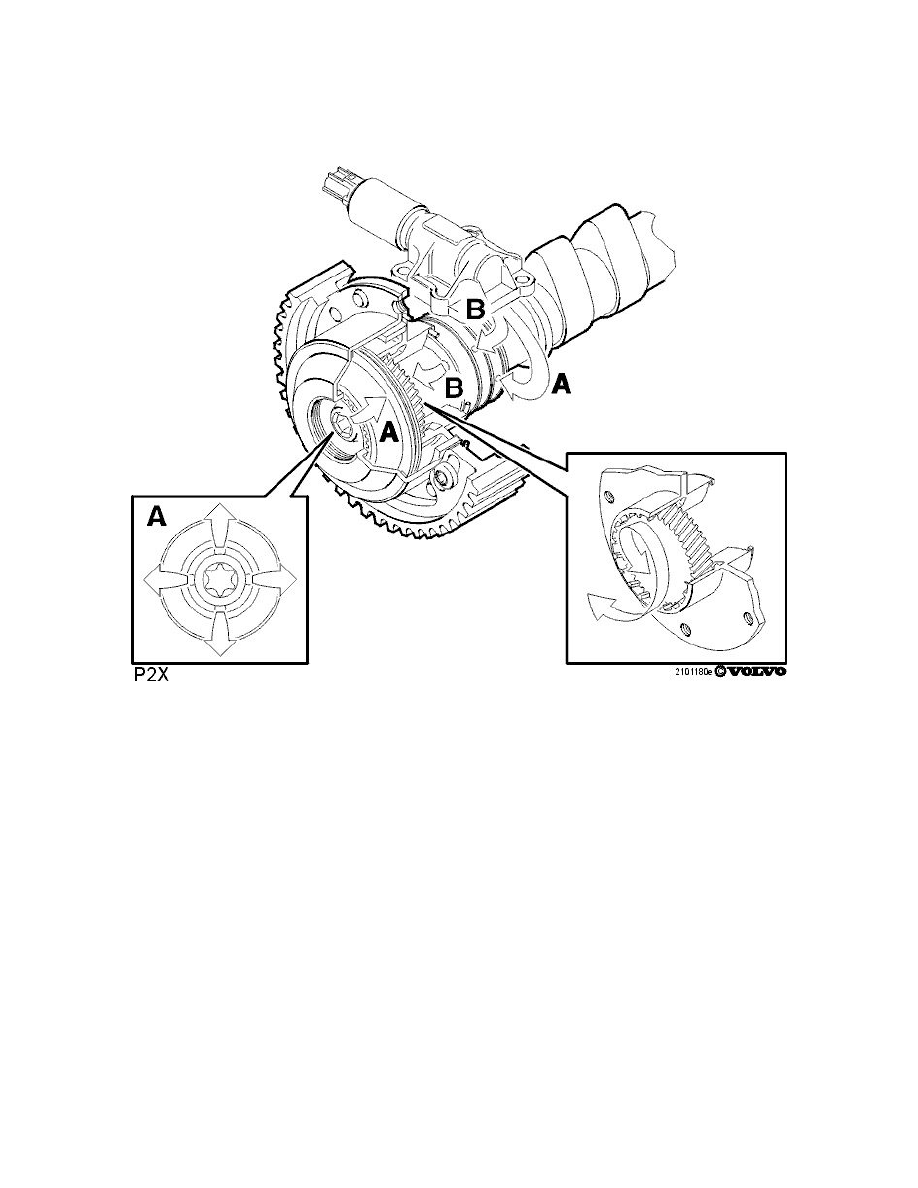S60 L5-2.4L VIN 64 B5244S6 (2003)

Engine Control Module: Description and Operation
Function
Function
Camshaft control (CVVT)
The engine control module (ECM) controls the camshaft reset valve (CVVT) steplessly. The pressure of the engine oil is used to regulate the CVVT
unit.
The CVVT unit is installed on the intake camshaft on all B5244-engines.
There are 30 camshaft degrees (60 crankshaft degrees) between the limit positions.
The variable camshaft is hydraulically controlled by the engine oil. The camshaft turns when the camshaft reset valve (CVVT) releases lubricating oil
into the front (A) or rear chamber (B) of the CVVT unit. The chambers are separated by a piston which is secured in the camshaft. The piston is secured
in the cover of the CVVT unit by splines so that it moves easily. When the oil acts on the piston, the piston twists. The pulse wheel for the timing belt is
on the outer cover of the CVVT unit.
Regulation is precise and rapid.
The camshaft reset valve (CVVT) has extremely fine ducts. This allows for precise regulation. However as a result the reset valve is sensitive to
contaminants.
The main role of the variable camshaft is to reduce exhaust emissions, especially during cold starting. Idle quality is also improved.
Before the engine starts, there is an internal check consisting of the following stages:
1. When the ignition is switched on, there is an electrical check of the signal cable, the power supply cable and the solenoid. This check checks for a
short-circuit to supply voltage or ground and open-circuits
2. The camshaft is checked to ensure that it is in the correct position in relation to the flywheel, with the camshaft in its 0 position (mechanical resting
position). This can be done by comparing the signals from the camshaft position (CMP) sensor and the engine speed (RPM) sensor. If there is too
much deviation between these, the camshaft reset valve (CVVT) is not activated and a diagnostic trouble code (DTC) is stored
3. During greater control of the variable camshaft, the amount of time taken to deploy the camshaft to the desired value is measured. This time is
used partly to assess how long it takes to change the angle of the camshaft and partly to disengage the variable camshaft if the time exceeds a
certain maximum limit. The camshaft uses the engine oil and the oil pressure to turn itself. The rotation time varies, depending on factors such as
engine speed (RPM), oil pressure and the viscosity of the oil (which depends open the temperature and quality of the oil)
4. The signal from the camshaft position (CMP) sensor is compared with the signal from the engine speed (RPM) sensor when the engine is turned
over to ensure that it is correct. The check stops when the engine has started. If the check returns faulty values, a diagnostic trouble code (DTC) is
stored and there is no camshaft control (CVVT).
